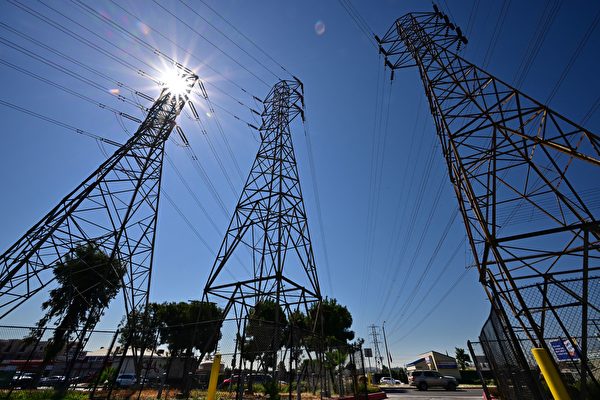Starting from the end of next year, most California residents will see an additional fixed monthly fee of $24.15 on their electricity bills. According to a report by the California non-profit news website CalMatters, for decades, Pacific Gas and Electric Company (PG&E), Southern California Edison (SCE), and San Diego Gas & Electric Company (SDG&E) have charged customers based on usage, where customers only pay for the actual amount consumed. However, following a controversial proposal approved by the California Public Utilities Commission (CPUC) on Thursday (May 9), the situation is changing. Starting from the end of 2025 for SCE and SDG&E, and the beginning of 2026 for PG&E, customers will be charged a fixed electricity fee every month.
The proposal approved by CPUC includes adjusting lower rates for consumer unit electricity consumption, reducing it by 5 to 7 cents per kilowatt-hour. Additionally, the new fixed fee will be adjusted based on customers’ income, with some low-income households paying $6 or $12, while most middle to high-income households will pay the full amount.
Most utility companies in the United States have already adopted fixed monthly fee schemes, but it has been a subject of much debate. Critics argue that this could ultimately lead to increased electricity expenses for middle-income families and households that use less energy. This includes residents living in smaller apartments, those with solar panels on their roofs, or those residing in cooler areas and not frequently using air conditioning. For them, the reduction in unit electricity prices may not be enough to offset the added fixed costs. Stephanie Doyle, California Affairs Director of the Solar Energy Industries Association, remarked, “It is clear there is a better way to reduce California’s extraordinarily high utility rates and encourage electrification.” California ranks second in electricity rates in the U.S., just behind Hawaii. The average fixed electricity fee in the U.S. is around $11, while California’s new standard is more than double that.
However, for those who consume a significant amount of energy each month, the approved proposal on Thursday may lead to savings on electricity bills. CPUC stated that individuals with electric vehicles and achieving household electrification could save on average $28 to $44 per month, as the money saved from the reduction in unit electricity prices will exceed the additional fixed costs.
The new policy is also set to benefit users living in hot regions of California. According to CPUC, customers in Fresno could save around $33 when using air conditioning during the summer, as temperatures often exceed 100 degrees Fahrenheit.
Reported by Bay Area news media KQED, CPUC Chairman Alice Reynolds mentioned that the new rate structure will incentivize people to use more clean energy and assist in funding the modernization of the grid. “We are moving towards the future we want to see; we hope this load growth,” she said, “We can use clean power and electric vehicles emitting less pollutants to replace gas-guzzling vehicles on the road.”
Regulatory agencies in California aim to have all new cars sold be electric by 2035 and are taking steps to phase out the use of gas-powered indoor appliances. These goals hinge on lowering unit electricity prices, and proponents of the new billing system argue that it is a necessary step to reduce California’s electricity costs.
However, former CPUC Chairman Loretta Lynch stated that California’s regulatory precedent for the past 50 years has been “the more you use, the more you pay, encouraging energy conservation.” The new policy reduces penalties for high energy consumption, which could result in “significant cost consequences” for California’s grid already struggling to meet summer demands.
Increased electricity usage could lead to strain on California’s power supply; in the summer of 2020, officials had to implement rolling blackouts to ensure the state did not run out of energy. State officials frequently urge people to save energy during peak hours from 4 p.m. to 9 p.m., and opponents fear that the new electricity pricing structure may deter people from doing so.
As for whether lowering unit electricity prices alone will encourage people to purchase electric vehicles, environmental organizations remain divided on the issue, with some believing it will prompt more individuals to switch to clean energy, while others argue it won’t have a significant impact.

